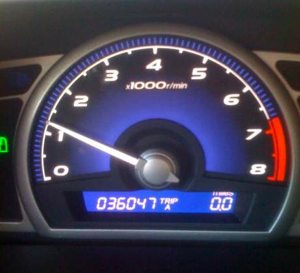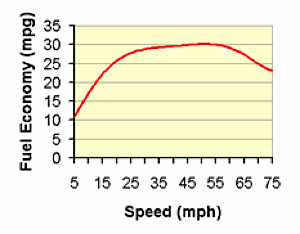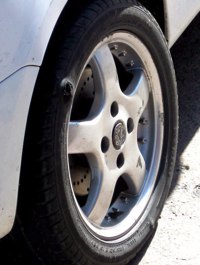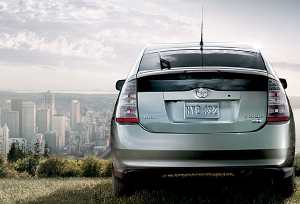 With higher gas prices becoming a recurring reality, you should follow these tips to help reduce the amount of gas you use. Including advice about cruise control and what kind of gas and oil you should buy, these tips can save you money
With higher gas prices becoming a recurring reality, you should follow these tips to help reduce the amount of gas you use. Including advice about cruise control and what kind of gas and oil you should buy, these tips can save you money
1) Don’t Drive Like You Have a Dying Man in the Car Unless you Do
Aggressive driving (speeding, rapid acceleration and braking) wastes gas. It can lower your gas mileage by 33 percent at highway speeds and by 5 percent around town. Sensible driving is also safer for you and others, so you may save more than gas money.
2) Remove Excess Weight
Avoid keeping unnecessary items in your vehicle, especially heavy ones. An extra 100 pounds in your vehicle could reduce your MPG by up to 2 percent. Your equivalent gasoline savings would be between $0.04–$0.07 per gallon. The reduction is based on the percentage of extra weight relative to the vehicle’s weight and affects smaller vehicles more than larger ones.

3) Observe the Speed Limit
This graph shows MPG vs Speed. While each vehicle reaches its optimal fuel economy at a different speed (or range of speeds), gas mileage usually decreases rapidly at speeds above 60 mph. Every 5 mph you drive over 60 mph is like paying an additional $0.24 per gallon for gas.
4) Avoid Idling Your Motor While Parked
Idling gets 0 miles per gallon. Cars with larger engines typically waste more gas at idle than do cars with smaller engines.
5) Use Cruise Control
Using cruise control on the highway helps you maintain a constant speed and, in most cases, will save gas.
6) Use Overdrive Gears
When you use overdrive gearing, your car’s engine speed goes down. This saves gas and reduces engine wear.
7) Keep Your Engine Properly Tuned
Get a tune-up! Fixing a car that is noticeably out of tune or has failed an emissions test can improve its gas mileage by an average of 4 percent, though results vary based on the kind and quality of repair.  Fixing a serious maintenance problem, such as a faulty oxygen sensor, can improve your mileage by as much as 40 percent.
Fixing a serious maintenance problem, such as a faulty oxygen sensor, can improve your mileage by as much as 40 percent.
8) Keep Tires Properly Inflated
You can improve your gas mileage by up to 3.3 percent by keeping your tires inflated to the proper pressure. Under-inflated tires can lower gas mileage by 0.3 percent for every 1 pound (per square inch) drop in pressure of all four tires. Properly inflated tires are also safer and prolong the life of the tires. The proper tire pressure for your vehicle is usually found on a sticker in the driver’s side door jamb or the glove box and in your owner’s manual. NOTE: Do not use the maximum pressure printed on the tire’s sidewall.
9) Change Your Oil and Use Recommended Grade of Motor Oil
You can improve your gas mileage by 1–2 percent by using the manufacturer’s recommended grade of motor oil. For example, using 10W-30 motor oil in an engine designed to use 5W-30 can lower your gas mileage by 1–2 percent. Using 5W-30 in an engine designed for 5W-20 can lower your gas mileage by 1–1.5 percent. Also, look for motor oil that says “Energy Conserving” on the API performance symbol to be sure it contains friction-reducing additives.
10) Plan Ahead and Combine Your Errands
Combining errands into one trip saves you time and money. Several short trips taken from a cold start can use twice as much fuel as a longer multipurpose trip covering the same distance when the engine is warm. Trip planning ensures that traveling is done when the engine is warmed-up and efficient, and it can reduce the distance you travel.
11) Commute to Work at Off-Peak Rush Hours

Drive your most fuel-efficient vehicle and consider telecommuting (working from home) if your employer permits it. Take advantage of carpools and ride-share programs. You can cut your weekly fuel costs in half and save wear on your car if you take turns driving with other commuters. Many urban areas allow vehicles with multiple passengers to use High Occupancy Vehicle (HOV) lanes which are typically less congested, further improving your fuel economy.
12) Avoid Driving With Items on Your Roof Rack
Avoid packing items on top of your car. A loaded roof rack or carrier creates wind resistance and can decrease fuel economy by five percent. Place items inside the trunk whenever possible.
13) Use the Octane Level You Need
Your owner’s manual recommends the most effective octane level for your car. For most cars, the recommended gasoline is regular octane. In most cases, unless your engine is knocking, using a higher octane gas than the manufacturer recommends offers no benefit and is a waste of money.
14) Buy a Fuel-Efficient Car
Selecting which vehicle to purchase is the most important fuel economy decision you’ll make. The difference between a car that gets 20 MPG and one that gets 30 MPG amounts to $880 per year (assuming 15,000 miles of driving annually and a fuel cost of $3.52). That’s $4,400 extra in fuel costs over five years.
For Data Sources, visit FuelEconomy.gov



















